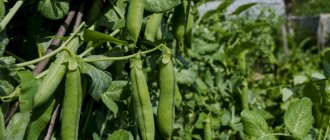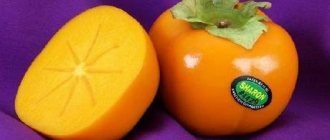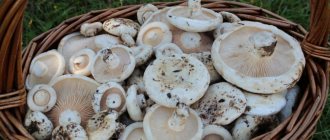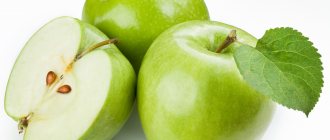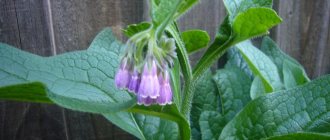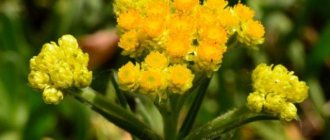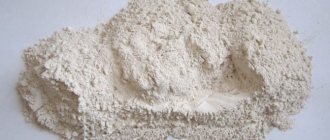What it is
This is a plant of the Umbrella family with an elongated yellow root plant immersed in the ground. The tops are a bunch of bright green leaves located above the soil surface, the shape of which resembles feathers.
Why is she yellow
The color of a vegetable depends on its chemical composition . Varieties in which pink and purple shades predominate contain a lot of anthocyanins, red and orange carrots contain more carotene, white carrots have virtually no pigment, and xanthophyll and lutein, coloring substances of the carotenoid class, are responsible for the yellow color of the vegetable.
Origin and development
The homeland of yellow carrots is Central Asia, where root vegetables of this color are even now found in the wild. They formed the basis for the creation of modern varieties and hybrids.
What is the difference between yellow and orange carrots?
The main differences between yellow carrots:
- root color;
- sweeter taste and higher calorie content;
- lower content of carotene and moisture;
- the presence of lutein in the chemical composition;
- need for a warmer climate.
Orange carrots. History of carrots in Europe and Russia
The history of carrots begins in Ancient Asia. Presumably from Afghanistan and Iran. At the moment, there are a huge number of carrot varieties in the world. And, they can be orange, red, black, yellow, white. Carrots are widely used in cooking, folk medicine, cosmetology, and dietetics. At the moment, it is well studied, but this was not always the case. So, let's dig deeper into history and for general development, let's understand where and how carrots came to us. Go?
Homeland and the beginning of the journey around the world
The birthplace of carrots, according to scientists, is Afghanistan and Iran. But, currently, carrots can be found wild in many European countries (in Russia too), Asia, and Africa. The ground part of such carrots is no different from modern cultivated varieties. But the root vegetables of wild carrots are smaller and less juicy.
It is known that carrots were introduced into culture more than 4,000 years ago. The data is confirmed by archaeological excavations, and various drawings and written evidence. In Switzerland, during excavations, scientists also discovered fossilized carrot seeds from the Bronze Age. I would like to note that the ancient Romans and Greeks also knew about carrots, considered them a delicacy, and consumed them only on major holidays.
It is interesting that earlier (in ancient times), carrots were grown not for their root crops, but for their juicy and aromatic tops and seeds. The first mention of eating root vegetables dates back to the 1st century AD. Even then, carrot fruits were used not only for food, but also for medicinal purposes. And, this is confirmed by records in ancient manuscripts.
Further, we will assume that carrots appeared in Europe only in the 9th - 13th centuries. By the way, Spain and France were the first countries where carrots began to be eaten. And also, during the time of Charlemagne, presumably the 13th century, carrots were in great demand.
The way forward
The next countries that began cultivating carrots were China, Japan and India. This happened in the 13th century. Carrots came to America in 1607, and the vegetable was not appreciated, and for a long time they fed carrots to pigs. And finally, the third President of America, Thomas Jefferson, developed as many as 18 varieties of carrots. He was a lover of growing plants.
An important point is that before the 17th century there were no orange carrots. White and purple, red and yellow carrots were in use. Russian scientist N. Vavilov claims that the homeland of white and purple fruits is Afghanistan, the yellow one is China, and the red one is the homeland of the Mediterranean.
Orange carrots, which are familiar to us, were bred in the Netherlands in the 17th century. Presumably, carrots got their orange color in connection with the royal dynasty of Orange. And it was orange that was considered the family color. William of Orange made Holland independent, and therefore, in his honor, the fruits were made orange.
History of carrots in Russia
In the Russian monument “Domostroye”, carrots are described in the 17th century. Here, foreign guests who were in Moscow at this time claim that in almost all vegetable gardens they came across beds with carrots.
But this is not the first acquaintance with the vegetable; for example, in Ancient Rus', carrots were placed next to the deceased during burial. It was believed that it served as food in the next world.
Useful properties of carrots
Carrots have gained popularity due to their beneficial properties. And, if you want to learn more about the beneficial properties of carrots, then read on.
Good luck to you!
Chemical composition, trace elements and vitamins, beneficial properties
Yellow carrots contain:
- magnesium;
- potassium;
- calcium;
- iron;
- zinc;
- fluorine;
- iodine;
- sodium;
- phosphorus;
- vitamins of group B, A, C, E, H, PP, K;
- proteins;
- fats;
- carbohydrates;
- cellulose;
- carotene;
- Sahara;
- xanthophyll;
- lutein
Lutein is good for vision and protects the retina from ultraviolet radiation, and xanthophyll blocks the development of cancer. Eating carrots is useful for people who have been diagnosed with urolithiasis and have problems with the bile ducts.
Calories and glycemic index
100 g of vegetable contains 33 kcal. Raw carrots have a low glycemic index of 35 units, but after heat treatment they cause a sharp increase in blood sugar levels (GI – 75-85 units).
Mshaki 195
The Mshaki 195 variety was created by Uzbek breeders. The shade of the pulp, core and protective shell is light yellow. 100 g of product contains about 9% sugar and 13 mg of carotene. Early variety. Root crops are harvested per bunch after 70 days. Technical ripeness occurs in 80-100 days.
Yellow carrots are used to prepare pilaf, salad, and as a seasoning for canning vegetables. Vegetables are stored well in a cool room:
- the fruit has a cylindrical shape. The maximum length of the fruit is 13 cm, diameter is 5 cm. The root crop weighs 98 g;
- low bush, 20-25 cm;
- when sowing, the distance between seedlings is left 7 cm, a step of 25-30 cm is maintained between rows;
- yield 3.5 kg/m2.
To prevent the development of powdery mildew on carrot bushes, it is recommended to treat with Alirin. It is produced in tablets. To prepare the solution, use 1 table. for 10 liters of water. The drug helps to avoid bacteriosis, which often develops on root crops.
Mshaki 195 grows well on sandy soils. It is recommended to add peat to the soil. Manure is not used. If the soil is loose and soft, the fruits will grow evenly, without damage or deformation. The crop has good immunity, but it is necessary to add ash to the soil to prevent fungal infection.
The plant can be attacked by aphids and carrot flies. During periods of special danger, it is recommended to spray the bushes and ground with the drug “Prestige”.
The main advantages and disadvantages of yellow carrots
Pros:
- sweeter taste;
- reduced moisture content;
- well suited for heat treatment.
Minuses:
- the likelihood of purchasing poor planting material, which will give low yields or the wrong color of root crops;
- demanding on air temperature, especially in the Mirzoi 304 variety.
How it is used
Yellow carrots can be eaten fresh and added to absolutely all dishes that require the use of carrots. These can be salads, vegetable fondues, soups, stews, pilaf, etc. This vegetable is often added to meat or fish dishes, preserves, marinades and even sweet pastries.
The seeds and pulp of yellow carrots are used in folk medicine as a laxative, to cleanse the sweat glands, liver and gallbladder, for the prevention and treatment of vitamin deficiency and anemia, as a remedy against worms in children, to treat burns, purulent wounds and sore throats.
What are the benefits for the human body?
Like carrots of other colors, yellow root vegetables improve metabolic processes in the body, have a positive effect on the functioning of the heart, have a diuretic and choleretic effect, and help fight worms. Carrots have a positive effect on the condition and color of skin, hair and nails, help in the formation of a correct bite and strengthen tooth enamel.
Yellow varieties prevent the formation of cancer cells because they contain a lot of xanthophyll, act as a means of preventing cardiovascular diseases and protect the retina.
Coloring
Variety White satin F1
Multi-colored carrots are, first of all, beautiful. Any culinary dish can be decorated in an original way with chopped rings and carrot figures of different colors. However, breeders worked not for beauty, but for benefit. It turns out that color affects the properties of this vegetable.
- White satin F1.
- Belgien white.
- Lunar white.
Take note: colorless white carrots, which have no coloring matter, are recommended for baby food. Unlike brightly colored varieties, it does not cause allergies.
Variety Solar yellow
- Yellowstone.
- Solar yellow.
- Mello yellow.
Yellow varieties contain lutein and xanthophyll, which protect the retina, improve skin tone, and normalize the functioning of internal organs.
Variety Elixir F1
- Elixir F1.
- Purple.
- Dranon.
We invite you to read: Detailed description and characteristics of the eggplant variety Almaz
Purple varieties contain anthocyanin, a natural enzyme that prevents the risk of cancer, increases immunity, and resistance against infections.
Red varieties:
- Variety Atomic ed
- Cosmic purple
- Helmaster.
- Atomic ed.
Red varieties contain beta-carotene and lycopene, which have a positive effect on heart function and protect against prostate and lung cancer. It should be noted significant improvements in memory and vision, slowing down the development of cataracts. Varieties with red and orange roots taste better than those with yellow and white roots.
Please note: Excessive consumption of carrot juice (more than 5-6 glasses per week) and root vegetables high in carotene may cause the skin, especially the feet and palms, to temporarily turn yellow. More often, this phenomenon is observed in children, since their liver does not have time to process carotene and remove excess from the body.
Varieties of yellow carrots
There are quite a few varieties of yellow carrots. The most popular ones are listed below.
Mirzoi 304
Table variety, bred in the 40s. XX century at the Uzbek Research Institute of Vegetables, Melons and Potatoes.
The root vegetables are yellow or light yellow, wide-cylindrical in shape with a blunt end, grow up to 10-15 cm in length and weigh 100-150 g. The leaves are dark green, the rosette is medium-dense. The pulp is juicy, sweet, the core makes up 30% of the vegetable.
The crop reaches technical maturity 113-120 days after planting, the yield is 200-300 c/ha.
The variety is demanding on temperature and watering, and is prone to cracking under unfavorable conditions. Suitable for fresh consumption, canning, and making juices.
Yellowstone
This is an early ripening variety of yellow carrots bred in the USA - the growing season is 70-85 days. Forms spindle-shaped root crops, at least 18 cm long, of bright lemon-yellow color.
Yellowstone carrots are characterized by high yields, excellent commercial qualities, the ability to adapt to different environmental conditions and resistance to diseases.
Solar Yellow
An early ripening variety native to America. The harvest ripens in 85-90 days.
The leaves are weak, medium pubescent. The root crops are spindle-shaped, reaching 15-20 cm in length and 3.5-4 cm in diameter. Suitable for fresh consumption and canning, not suitable for long-term storage.
Solar Yellow needs long daylight hours and an air temperature of at least +18°C.
Features of planting and growing yellow carrots
Cultivation of yellow carrots involves a standard algorithm, consisting of preparing planting material, sowing, care and harvesting. Moreover, each stage has some nuances.
Preparing for landing
Seed preparation consists of several stages:
- Selection. Seeds are placed in warm water and mixed - low-quality grains will float.
- Heat treatment. The seeds are placed in a fabric bag, first dipped in hot (+50°C), and then immediately in cold water, after which they are dried. This procedure reduces the risk of developing diseases.
- Growth stimulation. To improve germination, planting material is treated with growth stimulants, for example, “Fitosporin” or “Sodium Humate”), dissolving 100 or 50 ml of the drug in 1 liter of water, respectively.
- Bubbling. The seeds are placed in a container of water for 24 hours, into which oxygen is supplied through a compressor, after which they are dipped in a solution of potassium permanganate for 20 minutes, washed and dried.
The site is prepared in the fall: the ground is dug up, cleared of plant debris and fed with manure.
Soil requirements
The culture grows well in light, loose and fertile soil with good moisture and air permeability.
Predecessors
It is best to plant carrots after potatoes, tomatoes, physalis, pumpkins, cucumbers, watermelons, zucchini, cabbage, strawberries, basil, tarragon, lettuce, spinach, legumes, onions, and garlic.
It is not recommended to plant this crop in an area where dill, parsley, celery, beets or caraway seeds previously grew.
Dates, scheme and rules of planting
When planting carrots, 2 factors are taken into account: air temperature (not lower than +16°C) and crop ripening time (on average 85-120 days). Sowing before winter is carried out in early November, before the onset of cold weather.
Important! Untimely planting in the fall will lead to early seed germination and subsequent freezing of the seedlings.
Planting pattern:
- Prepare beds about 130 cm wide.
- Make 3-4 rows in them, keeping a distance of 20 cm between them.
- Place the seeds in the soil every 2 cm, deepening them 1.5 cm if the soil is heavy, or 2.5 cm if the soil is light.
- Sprinkle the seeds with a sand-peat mixture.
Features of cultivation
Yellow carrots make the most demands on temperature and humidity. For the Mirzoi 304 variety, high humidity and an air temperature of at least +16°C are important; for Yellow Solar, the minimum permissible temperature is +18°C.
Nuances of care
Caring for yellow carrots involves regular watering, fertilizing, as well as thinning seedlings and weeding the soil.
Watering mode
At an early stage of development, plants need abundant watering, but the soil should not be waterlogged. On average, carrots are watered every 3-4 days at the rate of 15-20 liters of water per 1 m².
Important! Water for irrigation must be settled and at ambient temperature.
Thinning and weed control
After the first two leaves appear on the seedlings, the plants are thinned out so that the distance between them is 3 cm. When 2 more leaves appear, the distance between the plants is increased to 5-6 cm.
Weed the ground as weeds grow, which negatively affect the development of carrots.
Top dressing
Fertilizing is applied 2 times: 20 days after emergence and 2 months after that.
Chicken droppings or cow manure diluted in water with the addition of wood ash are used as organic fertilizers. Mineral fertilizers for yellow carrots include “Nitrophoska” (1 tbsp per bucket of water) and a solution of nitrate, urea and double superphosphate.
Disease and pest control
Yellow carrots can be affected by Phoma and Alternaria blight . To treat these diseases, the plantings are treated with a 1% solution of Bordeaux mixture or fungicidal preparations - “Prozaro”, “Falcon”.
Among the pests, carrot flies pose the greatest danger. Insecticides, for example, “Aktary” or “Detsis”, will get rid of insects.
Negative effects of yellow carrots
Contraindications are related to the large number of carotene compounds in the root vegetable. If a person consumes a large amount of the product in a short time, his skin will acquire a noticeable yellowish tint, especially in the face and palms.
These external signs manifest the disease carotenemia - oversaturation of the human body with beta-carotene. To get rid of this scourge, you should exclude yellow carrots from your diet for 2-3 weeks and monitor the further dose of its consumption.
Carrots can be harmful to people who have certain health problems:
- smoke a large number of cigarettes per day;
- predisposed to allergies to root vegetables;
- have a stomach ulcer or thyroid problems;
- suffer from insulin-dependent diabetes mellitus.
Products grown in large fields are at risk. For ease of processing and preserving the harvest, insecticides and growth accelerators are often used. Residues of these chemical compounds accumulate in root vegetables and negatively affect the person who eats them. It is better to choose environmentally friendly products grown using organic fertilizers and pest control products.
Harvest and storage
It is important to harvest yellow carrots on time - if the vegetables are in the soil for too long, they become tough and bitter.
How and when to collect
Most often, the harvest is harvested in June, but you can find out for sure whether carrots are ripe or not by pulling several root crops out of the ground and inspecting them. If there are shallow roots, the crop can be harvested.
The collection is carried out on a dry sunny day, pulling the carrots out of the ground by the tops.
Storage features and shelf life
The collected carrots are carefully inspected and sorted: only specimens without mechanical damage and signs of rot and disease are suitable for storage.
High-quality root vegetables are dried in the sun or, in case of rain, under a canopy, then the tops are cut off so that the carrots do not germinate, placed in wooden or plastic boxes with holes for ventilation and placed in a room with a temperature of maximum +4°C. Shelf life – 6-8 months.
Reviews of yellow carrots
Experienced farmers speak positively about yellow carrots.
Elena, Tula: “I’ve been growing yellow carrots for several years, specifically the Mirzoi 304 variety. I tried it as an experiment, I wanted something unusual, but in the end the whole family liked this carrot. Even the grandchildren eat it with pleasure - it’s very sweet, they like it.”
Valentina, Ryazan: “I tried to grow several varieties of yellow carrots, but in the end I settled on the Yellowstone variety. I really like the color – so bright, appetizing, you just want to eat it. Children gobble it up with pleasure - it’s beautiful and very sweet. Of course, it is quite capricious - it needs a special temperature and must be watered often and a lot, but this is not a burden for me.”


